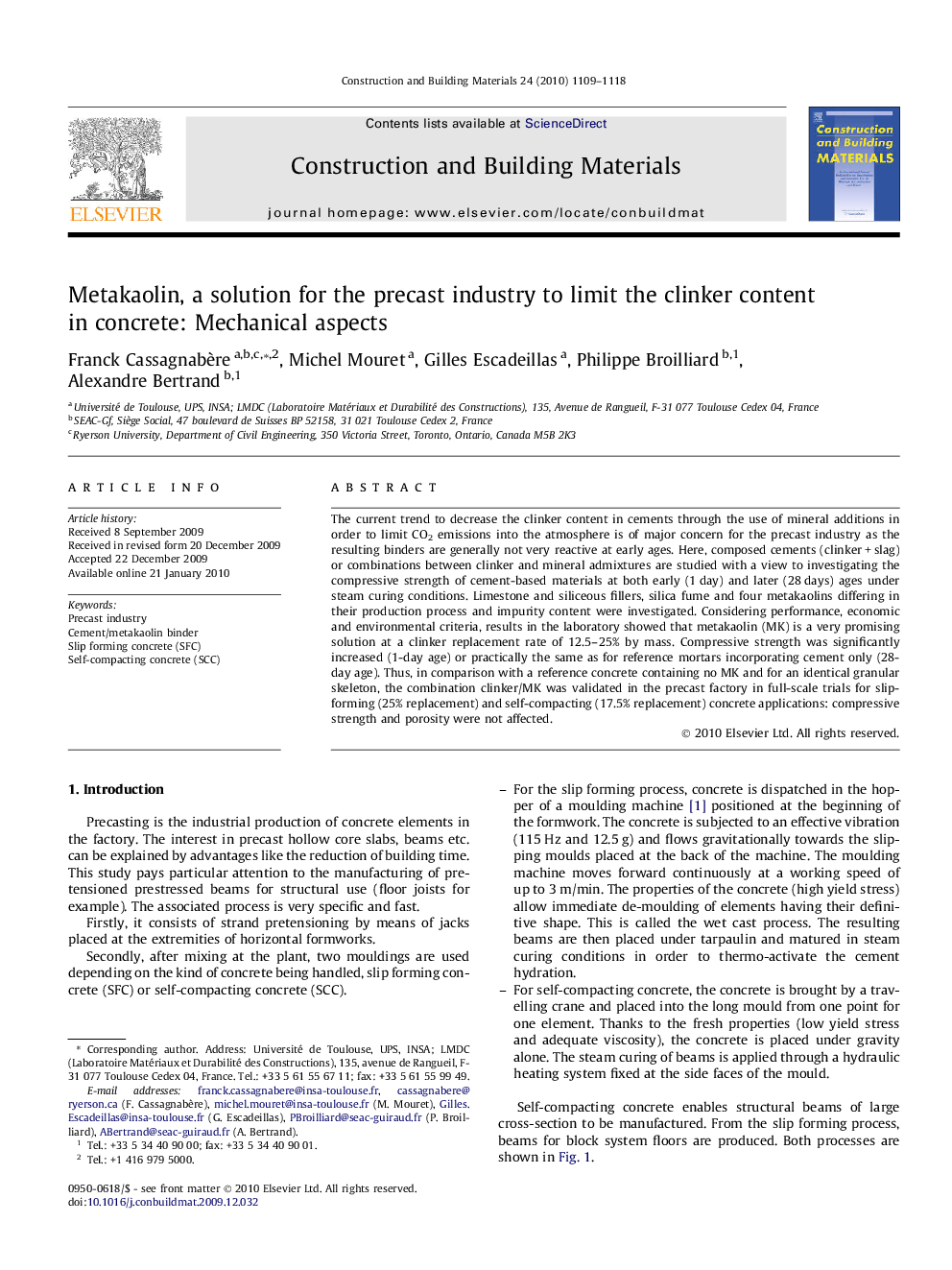| Article ID | Journal | Published Year | Pages | File Type |
|---|---|---|---|---|
| 259657 | Construction and Building Materials | 2010 | 10 Pages |
The current trend to decrease the clinker content in cements through the use of mineral additions in order to limit CO2 emissions into the atmosphere is of major concern for the precast industry as the resulting binders are generally not very reactive at early ages. Here, composed cements (clinker + slag) or combinations between clinker and mineral admixtures are studied with a view to investigating the compressive strength of cement-based materials at both early (1 day) and later (28 days) ages under steam curing conditions. Limestone and siliceous fillers, silica fume and four metakaolins differing in their production process and impurity content were investigated. Considering performance, economic and environmental criteria, results in the laboratory showed that metakaolin (MK) is a very promising solution at a clinker replacement rate of 12.5–25% by mass. Compressive strength was significantly increased (1-day age) or practically the same as for reference mortars incorporating cement only (28-day age). Thus, in comparison with a reference concrete containing no MK and for an identical granular skeleton, the combination clinker/MK was validated in the precast factory in full-scale trials for slip-forming (25% replacement) and self-compacting (17.5% replacement) concrete applications: compressive strength and porosity were not affected.
